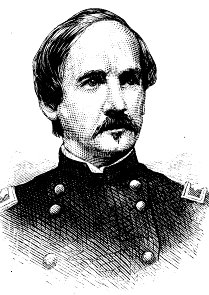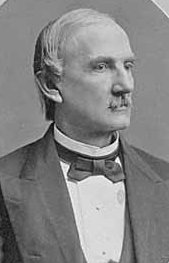

Governor of Minnesota
 |
 |
Governor of Minnesota |
_____________________
|
______________________________|_____________________
|
_____________________|
| |
| | _____________________
| | |
| |______________________________|_____________________
|
_Reuben Sibley ____________|
| (1743 - 1810) m 1765 |
| | _____________________
| | |
| | ______________________________|_____________________
| | |
| |_____________________|
| |
| | _____________________
| | |
| |______________________________|_____________________
|
_Solomon Sibley _______|
| (1769 - 1846) m 1802 |
| | _____________________
| | |
| | ______________________________|_____________________
| | |
| | _____________________|
| | | |
| | | | _____________________
| | | | |
| | | |______________________________|_____________________
| | |
| |_Ruth Sibley ______________|
| m 1765 |
| | _____________________
| | |
| | ______________________________|_____________________
| | |
| |_____________________|
| |
| | _____________________
| | |
| |______________________________|_____________________
|
|
|--Henry Hastings Sibley
| (1811 - 1891)
| _____________________
| |
| ______________________________|_____________________
| |
| _Ebenezer Sproat ____|
| | (1717 - 1786) |
| | | _____________________
| | | |
| | |______________________________|_____________________
| |
| _Ebenezer Sproat __________|
| | (1752 - 1805) m 1781 |
| | | _____________________
| | | |
| | | ______________________________|_____________________
| | | |
| | |_Bathsheba Wood _____|
| | (1724 - 1798) |
| | | _____________________
| | | |
| | |______________________________|_____________________
| |
|_Sarah Whipple Sproat _|
(1782 - 1851) m 1802 |
| _Noah B. Whipple ____+
| | (1667 - 1703)
| _Noah Whipple ________________|_Susannah ___________
| | (1697 - 1784) m 1722
| _Abraham Whipple ____|
| | (1733 - 1819) m 1761|
| | | _John Dexter ________+
| | | | (1673 - 1734) m 1685
| | |_Mary Dexter _________________|_Mary Field _________
| | (1699 - ....) m 1722 (1673 - 1727)
|_Katherine "Katy" Whipple _|
(1762 - 1835) m 1781 |
| _William Hopkins ____+
| | (1682 - 1738)
| _John Hopkins ________________|_Ruth Wilkinson _____
| | (1713 - 1745) m 1735 (1685 - 1731)
|_Sarah Hopkins ______|
(1739 - 1818) m 1761|
| _William Turpin _____+
| | (1690 - 1744)
|_Catherine or Kathrin Turpin _|_Catharine Jenckes __
(1719 - 1749) m 1735 (1694 - 1782)
!SOURCE: Theodore C. Blegen, ed., The Unfinished Autobiography of Henry Hastings Sibley (Minneapolis: Voyageur Press, 1932), p. 8.
!OCCUPATION: First Governor of the State of Minnesota, 1858-1860. --R.W. Lange
!SOURCE: Email from N. Combs to Weldon Whipple, 28 Jul 2004. Cites The Twentieth Century Biographical Dictionary of Notable Americans Volume IX, page 364:
SIBLEY, Henry Hastings {49390}, governor of Minnesota, was born in Detroit, Mich., Feb. 20, 1811; son of Judge Solomon (1769-1846) and Sarah Whipple (Sproat) Sibley; grandson of Reuben and Ruth (Sibley) Sibley, and of Col. Ebenezer and Catherine (Whipple) Sproat, and a descendant of John Sibley, who sailed from England in Winthrop's fleet in 1629, and settled in Salem, Mass. His father, a native of Sutton, Mass., removed to Detroit, Mich., in 1797, where he became prominent in the early history of the city and state. He studied law in his father's office; was employed in a mercantile house in Sault Salute Marie in 1828, and was supply-purchasing [p.364] agent of the American Fur company at Mackinac, 1829-34, and in 1834 became a partner with headquarters at St. Peter's (Mendota), Minn., where he remained, 1834-62, removing in 1862 to St. Paul, Minn. He was married, May 2, 1843, to Sarah Jane {56863}, daughter of General James and Mary (Hume) Steele; then living at Fort Snelling. He was elected a delegate from Wisconsin Territory to the 30th congress to fill the vacancy caused lay the resignation of John H. Tweedy, serving in the 30th, 31st, and 32d congresses from Jan. 15, 1849, to March 4, 1853. He was influential in the 30th congress in having a part of Wisconsin and a tract west of the Mississippi laid off as the Territory of Minnesota. He represented Dakota county in the territorial legislature, January to March, 1855; was a member of the Democratic wing of the first Minnesota constitutional convention assembled July 13, 1857, the constitution as framed being adopted by the people, Oct. 13, 1857, and was elected the first governor of the state, serving from May 24, 1858, until Jan. 2, 1860. He was ordered by the supreme court to issue state bonds to railroads, after his refusal to issue them under direction of the legislature unless the railroads would give priority of lien on their property to the state, and he was also requested to market the bonds in New York, which he made an effort to do, but capitalists refused to buy them and they were subsequently repudiated by the state. He was appointed colonel of a regiment of volunteers sent up the Minnesota river to protect the exposed points from the Sioux Indians, and the massacre at Acton, Aug. 18, 1862, was followed by the repulse of the Indians at New Ulm, Aug. 19 and 25, the attack on Fort Ridgely, Aug. 20, the bloody affair at Brick Coolie, Sept. 1, and the battle of Wood Lake, Sept. 22, 1862, the last being the decisive battle and effecting the release of about 250 white settlers and the capture of 2,000 Indians of both sexes, of whom 321 were tried for capital crimes and 303 condemned to die. Of these, 38 were hanged at Mankate, Dec. 26, 1862. He was appointed brigadier-general of volunteers, Sept. 29, 1862, for "gallantry in the field"; established headquarters at St. Paul, and created a new military department, embracing Minnesota, Dakota, Iowa, and Wisconsin, which he fortified with posts anti garrisons. He led a second successful expedition against the Sioux in Dakota in 1863, including the battle of Big Mound, July 24; Dead Buffalo Lake, July 26, and Stony Lake, July 28. He was employed in conducting measures for the defence of the western frontier, 1864-65, and was brevetted major-general of volunteers, Nov. 29, 1865, for efficient and meritorious services. He was relieved from the command of the district of Minnesota in August, 1866; was active in settling several Indian treaties, and upon reentering business life in St. Paul, served as president of the chamber of commerce, and of several railroads, banks, and other large corporations. He became a member of the Minnesota Historical society, in 1849; of the Old Settlers' association of that state in 1858, and of the board of visitors to the U.S. Military academy, in 1867. He was also regent of the University of Minnesota, 1868X91: president of the board of Indian commissioners, 1875-76, and received the honorary degree LL.D. from the College of New Jersey, in 1888. He contributed to the collections of the Minnesota Historical society, to the Spirit of the Times and to Turf, Field and Farm. He died in St. Paul, Minn., Feb. 18, 1891.
RIN 49390. Quick link to this page: https://genweb.whipple.org/49390
Email corrections and additions to whipple@one-name.org
View this person at the Whipple One-Name Study
© Whipple Website. All rights reserved.
HTML created by GED2HTML v3.6-Linux (Mar 8 2001) on Mon Dec 1 22:28:53 2025 GMT.